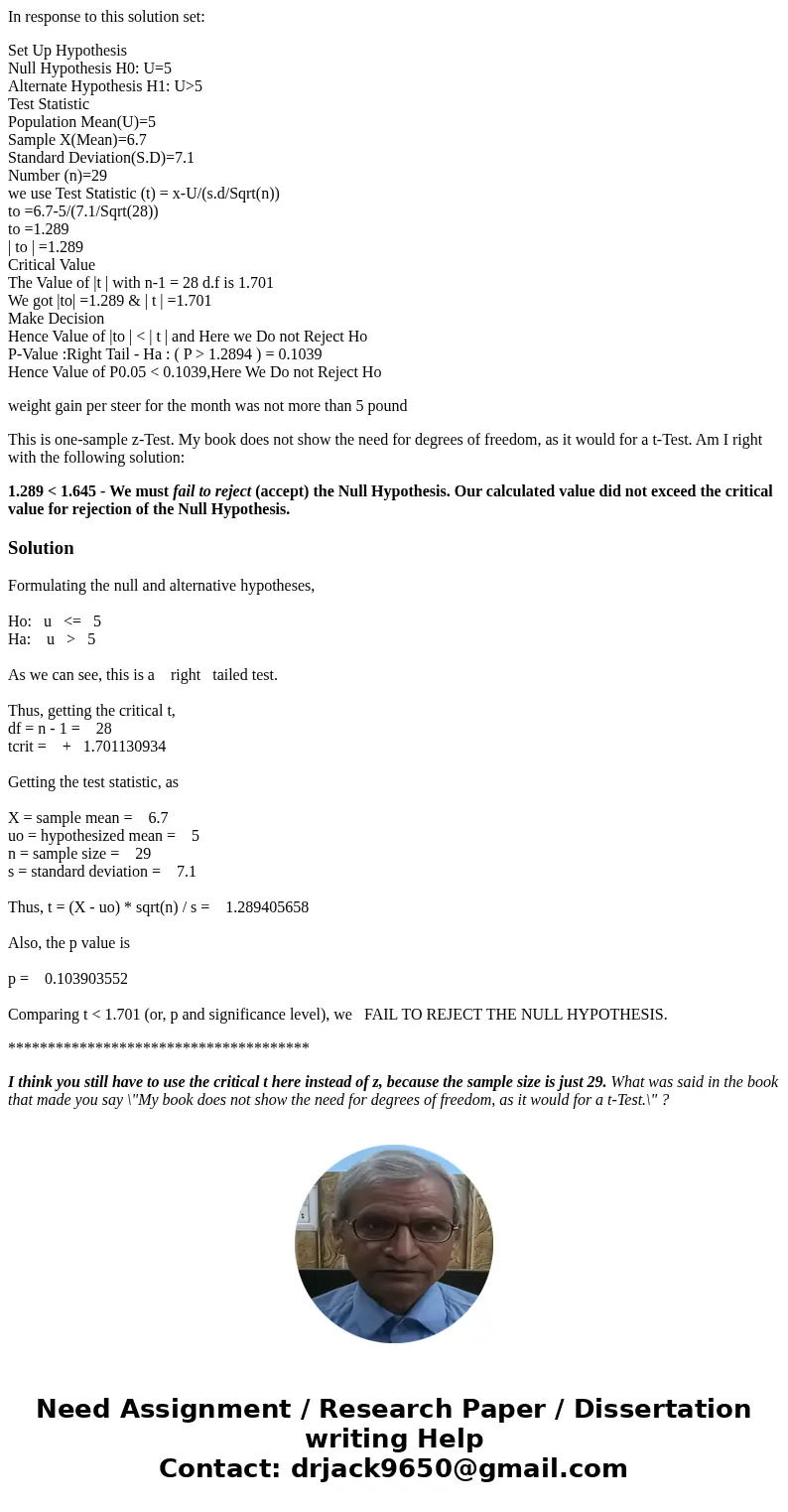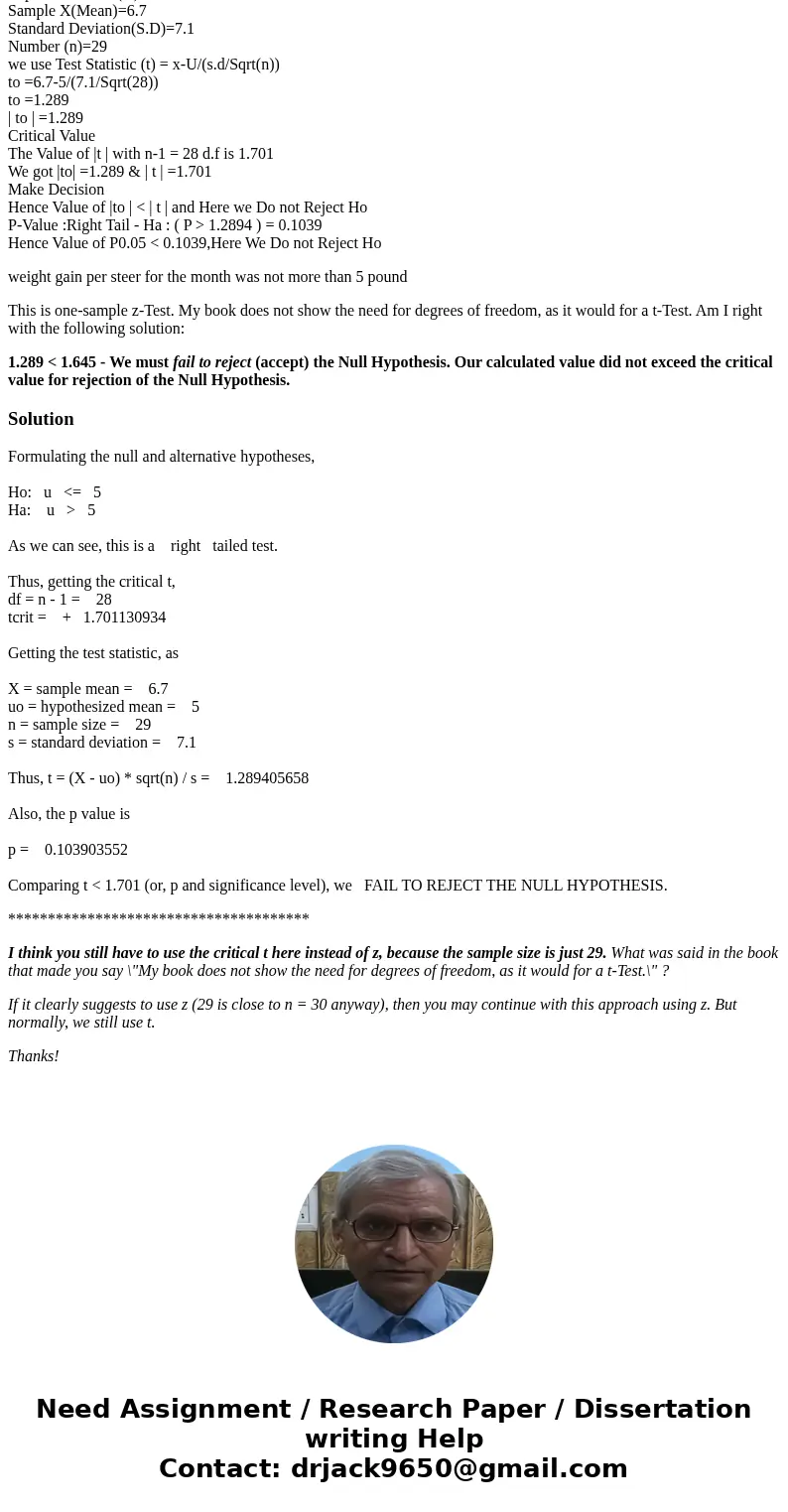In response to this solution set Set Up Hypothesis Null Hypo
In response to this solution set:
Set Up Hypothesis
Null Hypothesis H0: U=5
Alternate Hypothesis H1: U>5
Test Statistic
Population Mean(U)=5
Sample X(Mean)=6.7
Standard Deviation(S.D)=7.1
Number (n)=29
we use Test Statistic (t) = x-U/(s.d/Sqrt(n))
to =6.7-5/(7.1/Sqrt(28))
to =1.289
| to | =1.289
Critical Value
The Value of |t | with n-1 = 28 d.f is 1.701
We got |to| =1.289 & | t | =1.701
Make Decision
Hence Value of |to | < | t | and Here we Do not Reject Ho
P-Value :Right Tail - Ha : ( P > 1.2894 ) = 0.1039
Hence Value of P0.05 < 0.1039,Here We Do not Reject Ho
weight gain per steer for the month was not more than 5 pound
This is one-sample z-Test. My book does not show the need for degrees of freedom, as it would for a t-Test. Am I right with the following solution:
1.289 < 1.645 - We must fail to reject (accept) the Null Hypothesis. Our calculated value did not exceed the critical value for rejection of the Null Hypothesis.
Solution
Formulating the null and alternative hypotheses,
Ho: u <= 5
Ha: u > 5
As we can see, this is a right tailed test.
Thus, getting the critical t,
df = n - 1 = 28
tcrit = + 1.701130934
Getting the test statistic, as
X = sample mean = 6.7
uo = hypothesized mean = 5
n = sample size = 29
s = standard deviation = 7.1
Thus, t = (X - uo) * sqrt(n) / s = 1.289405658
Also, the p value is
p = 0.103903552
Comparing t < 1.701 (or, p and significance level), we FAIL TO REJECT THE NULL HYPOTHESIS.
**************************************
I think you still have to use the critical t here instead of z, because the sample size is just 29. What was said in the book that made you say \"My book does not show the need for degrees of freedom, as it would for a t-Test.\" ?
If it clearly suggests to use z (29 is close to n = 30 anyway), then you may continue with this approach using z. But normally, we still use t.
Thanks!


 Homework Sourse
Homework Sourse